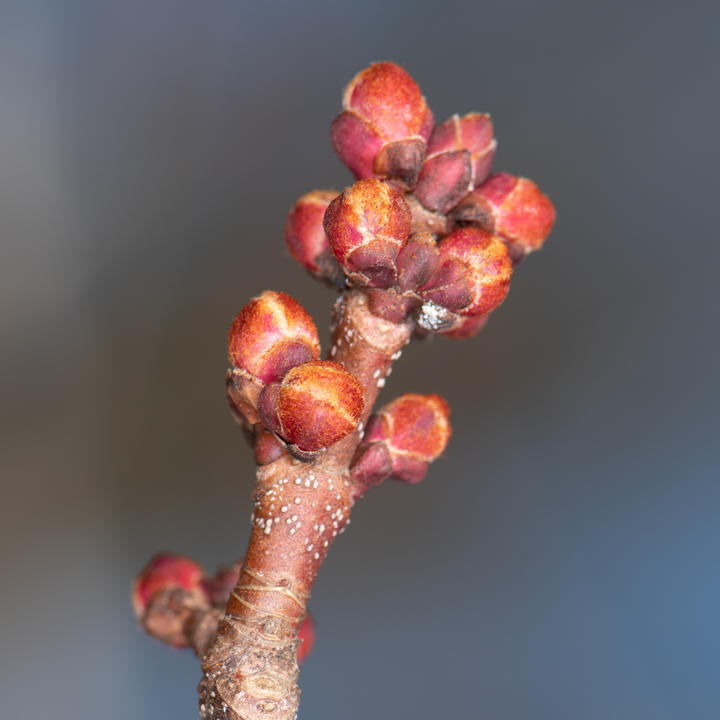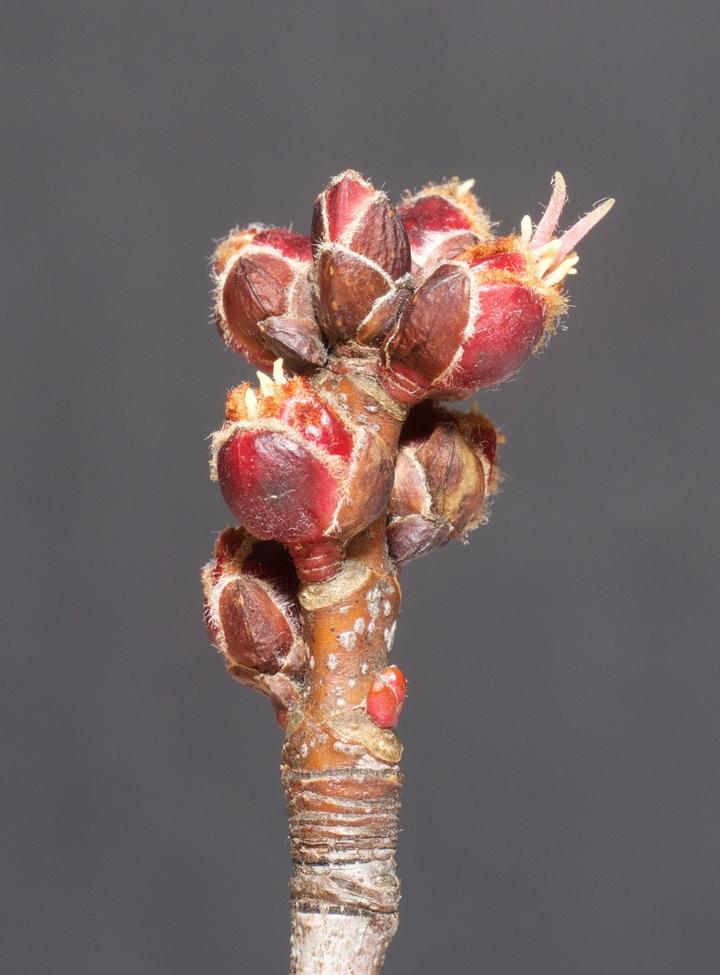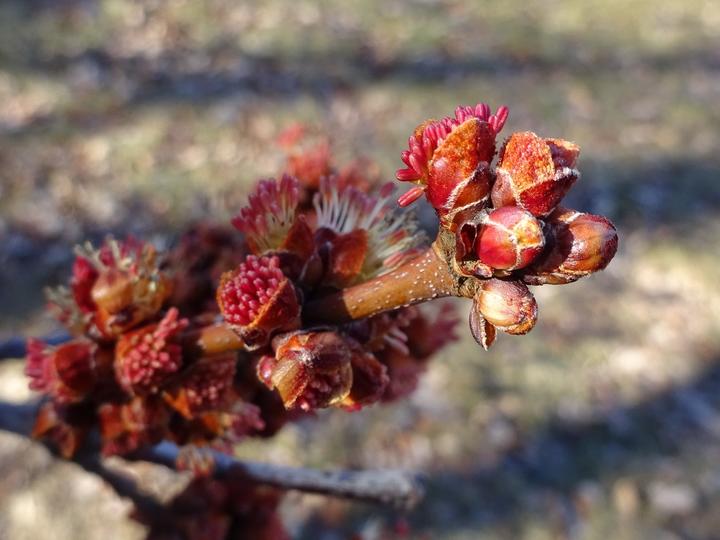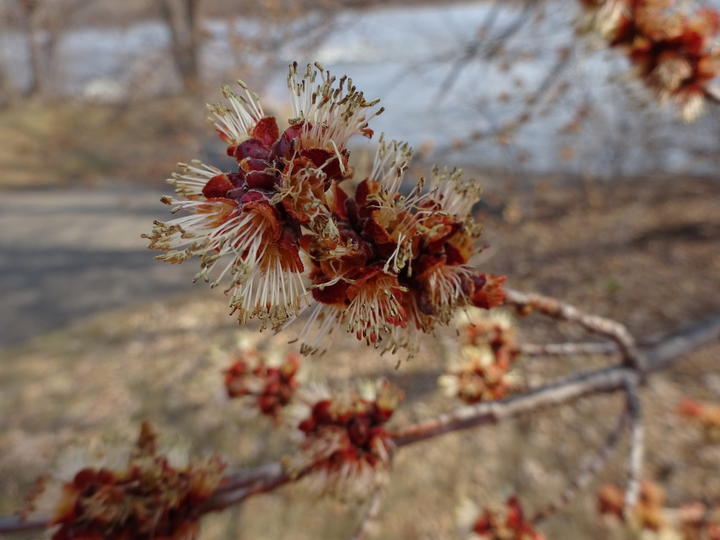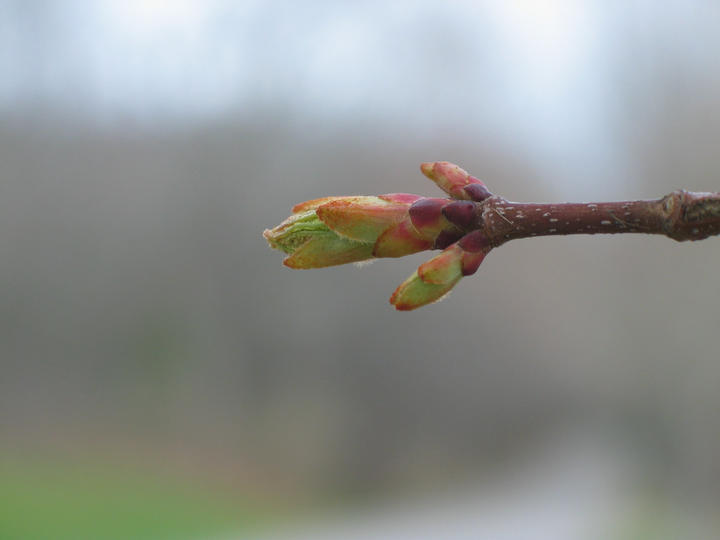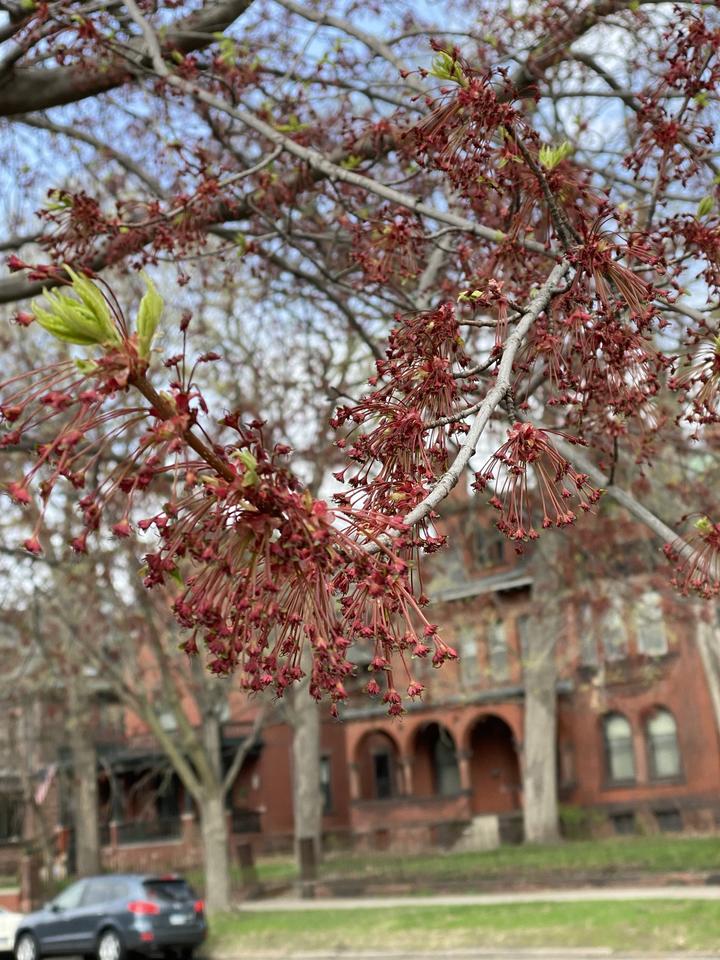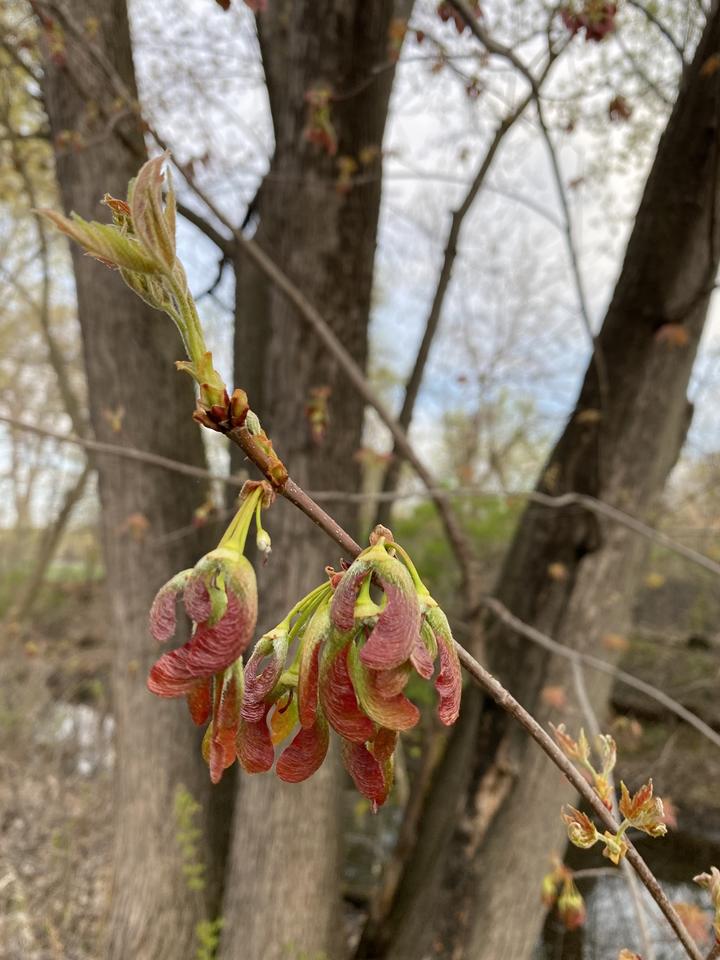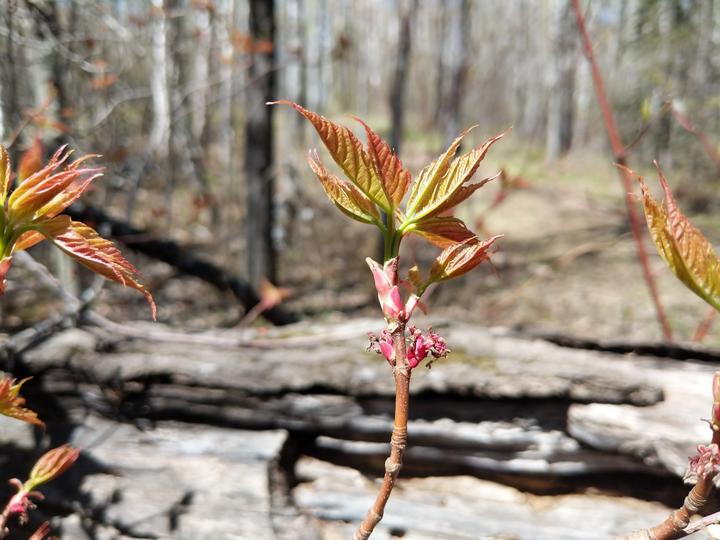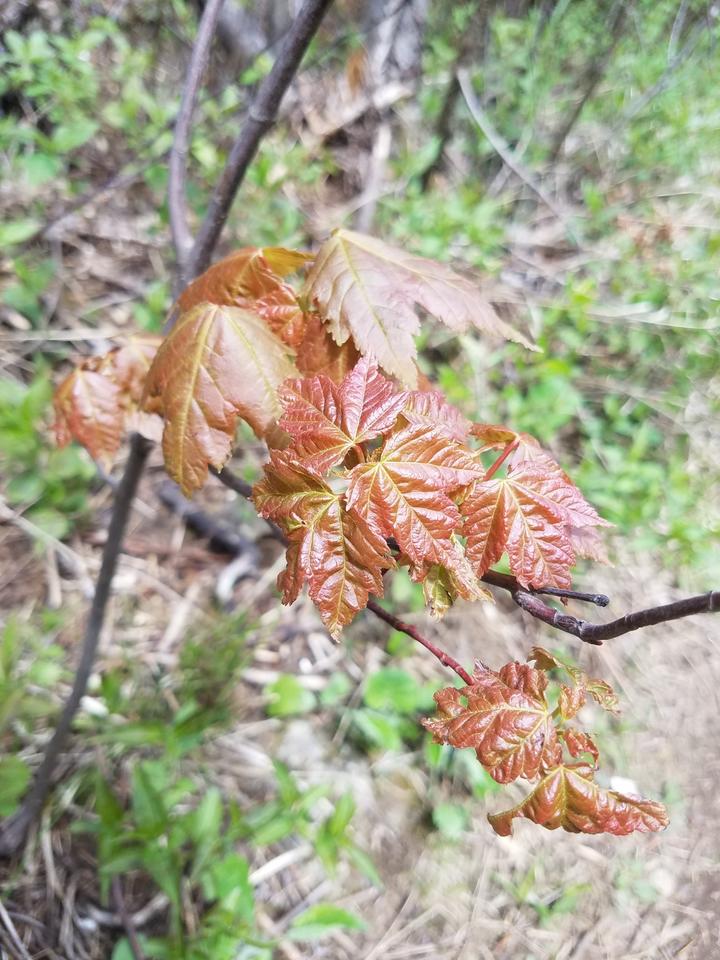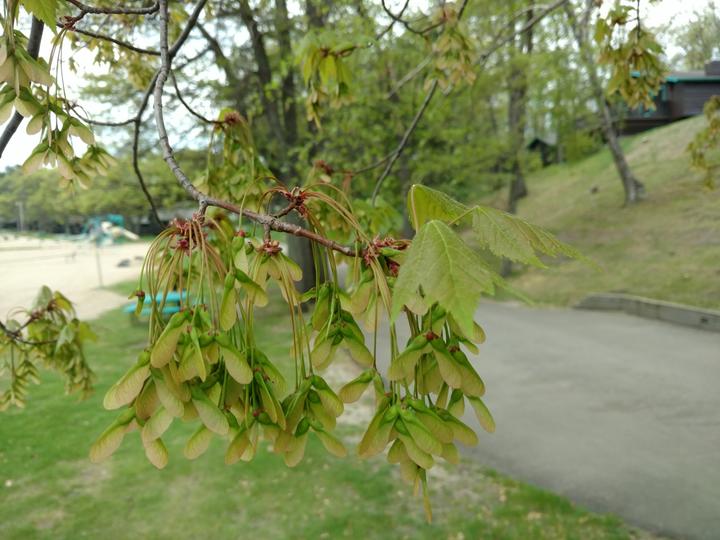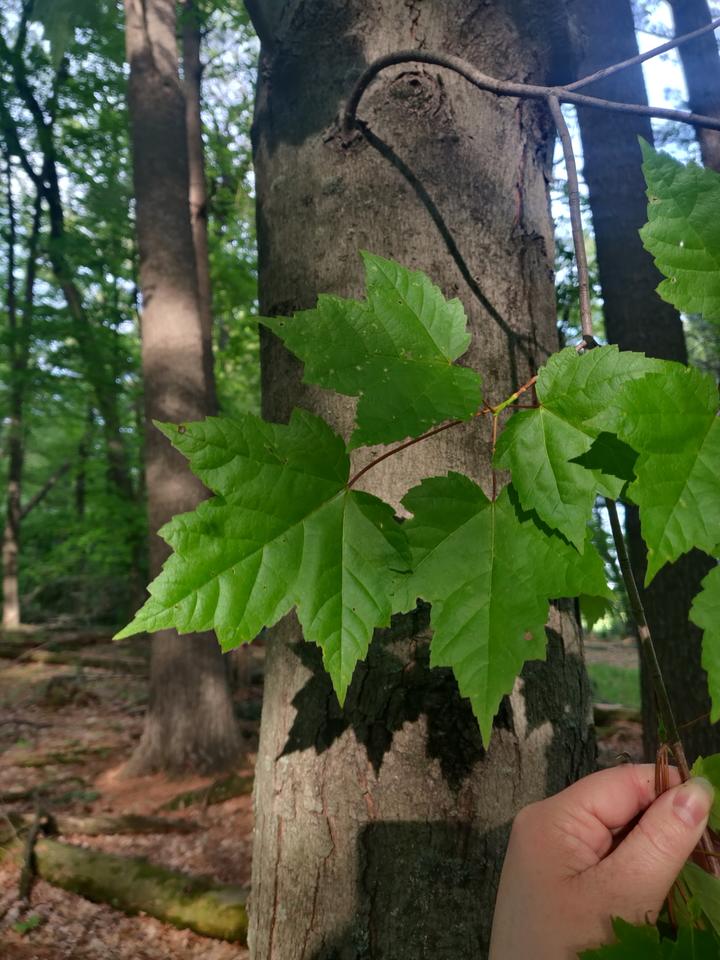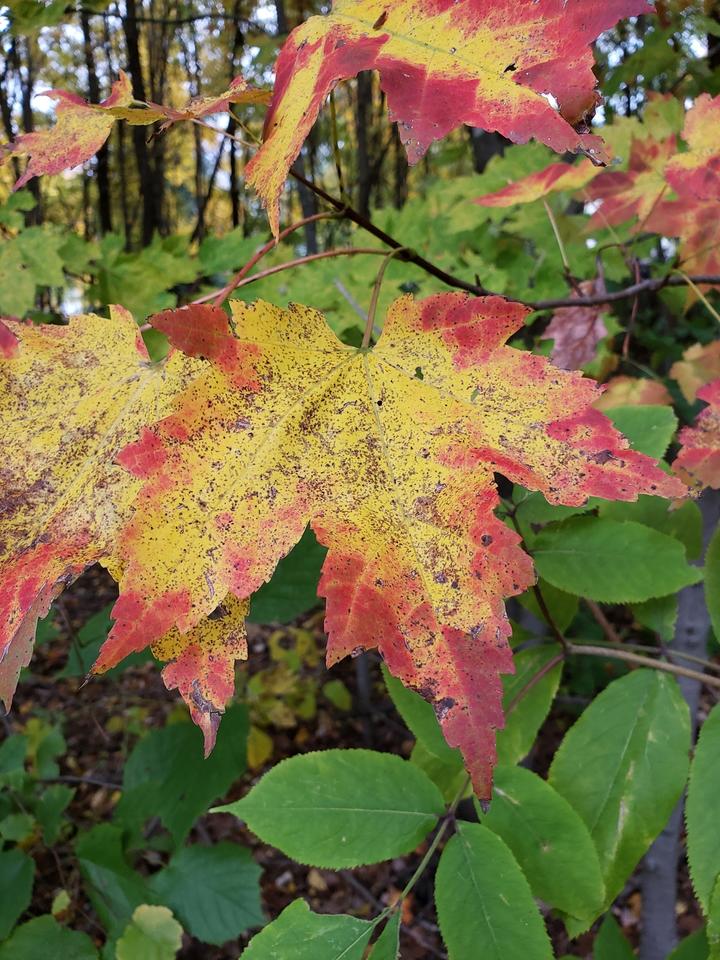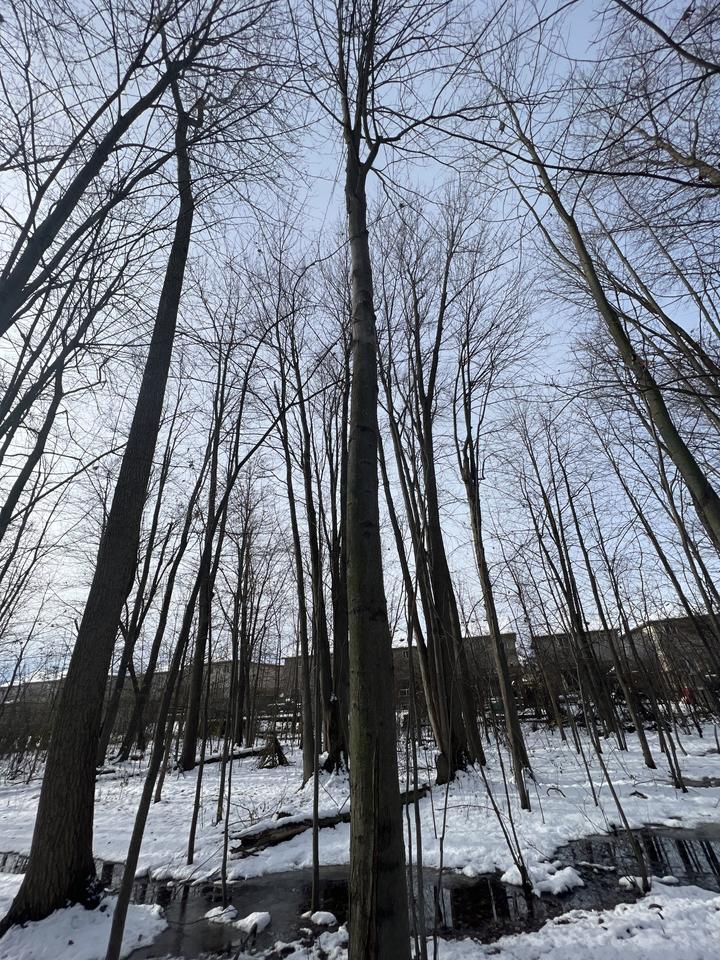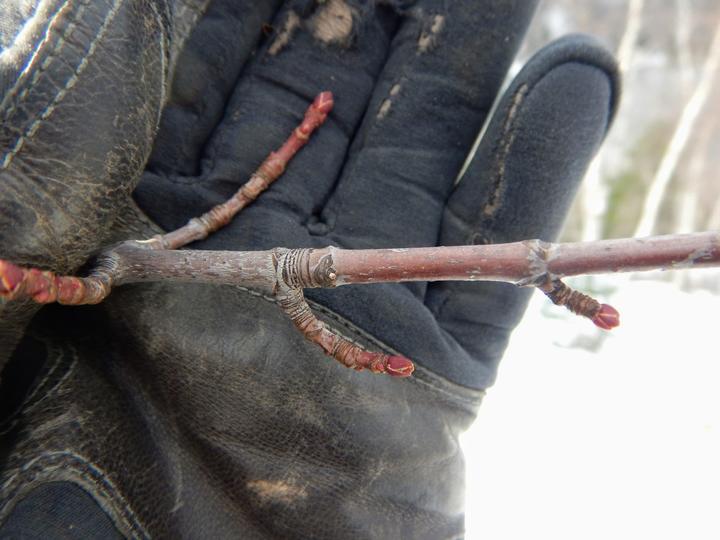More names for this tree
Anishinaabemowin: Ininaatig
The Dakota and Anishinaabe were among the earliest people to name Minnesota’s plants and animals, as well as to understand them in relation to Minnesota’s climate and seasons. Those original names are still in use, and several are included on the Season Watch website. However, complete translations were not available.
Latin (or scientific name): Acer rubrum
The scientific community has a convention of assigning agreed-upon Latin names to every kind of organism. Using scientific names helps people communicate confidently about the same organism and organize lifeforms based on how closely related they are.
More common names: soft maple, swamp maple
Page contents
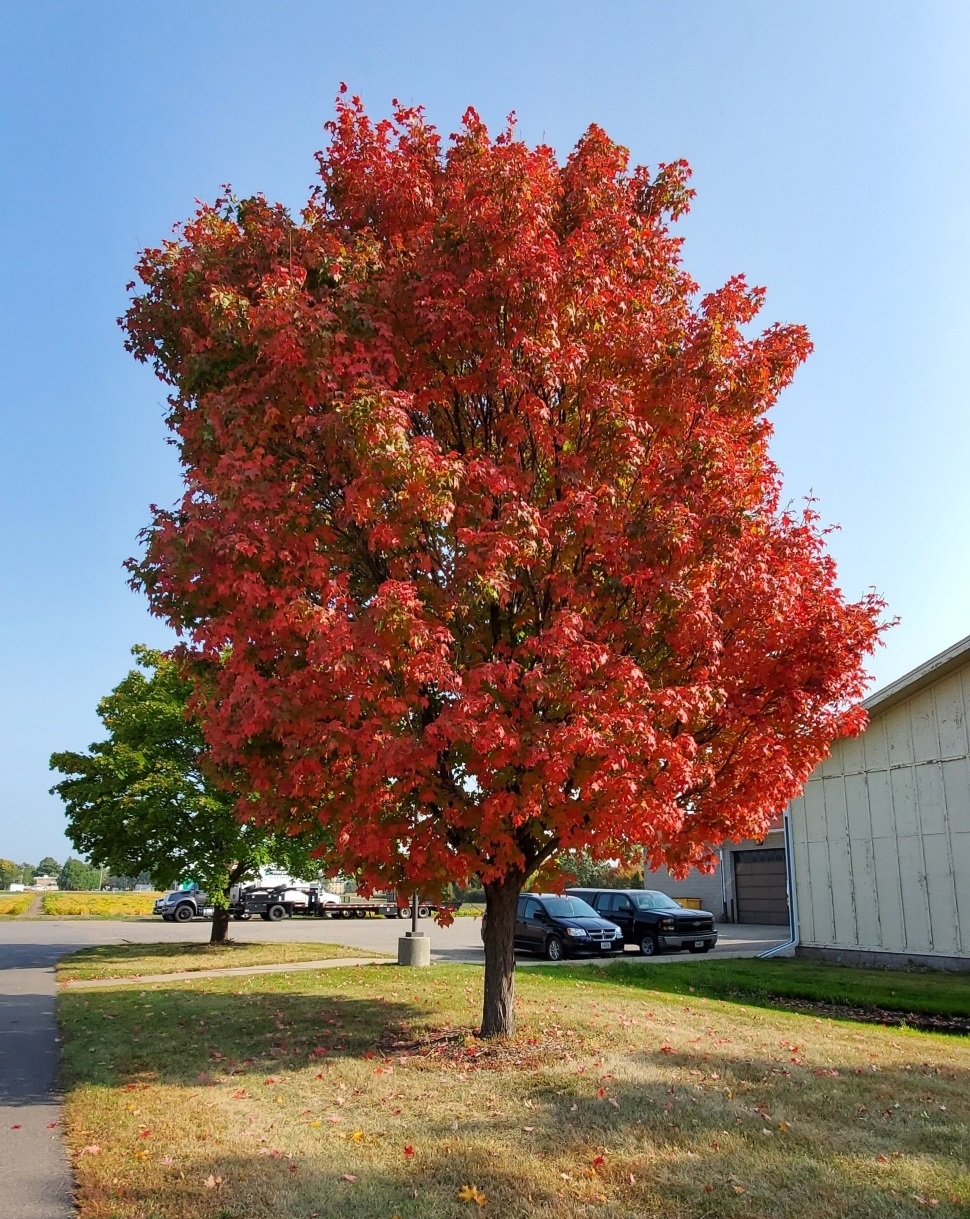
November 7, 2020, Ramsey County, Minnesota
Photo © Kara, some rights reserved (CC-BY-NC 4.0)
iNaturalist observation
About the red maple
- The red maple is a deciduous tree that reaches forty to seventy feet at maturity.
- From March to May, before the tree has leaves, red or magenta flowers open and are pollinated by wind and insects.
- In Minesota, leaf buds generally break open in April and May.
- The fruit is a winged nutlet called a samara that can be seen twirling to the ground in May and June.
- Autumn leaves turn brilliant red, orange and yellow.
Visual guide to phenology
Watch for the appearance of leaves, flowers, and fruits. Take notice of when flowers open and fruits ripen.
Note to observers
This page explains general clues to watch for when observing red maple phenology. However, this page does not instruct observers on how to identify this plant or collect data in a standardized way.
- For help with identification, see Minnesota Wildflowers.
- For guidance on collecting data, see Nature’s Notebook.
Graphs and historical data
Note: The Orientation Center provides a map, as well as information on reading graphs; interpreting summary statistics, who collected the data and how; and how to download datasets for independent exploration.
Flowering
- Earliest: March 24 (occurred in 2012)
- Average: April 19
- Latest: May 8 (occurred in 2013)
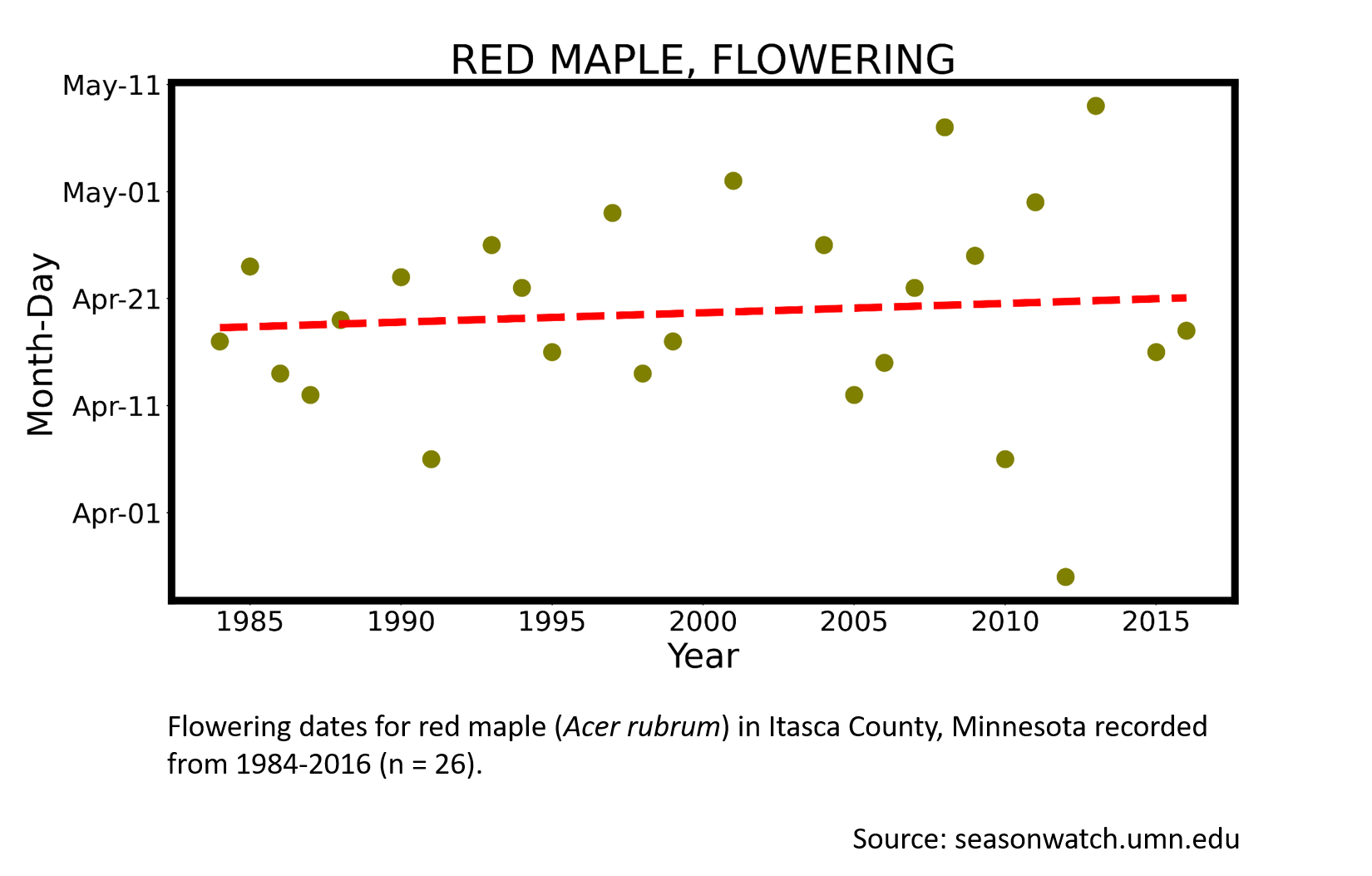
Last flowers
- Earliest: April 19 (occurred in 2010)
- Average: May 7
- Latest: May 16 (occurred in 1988)
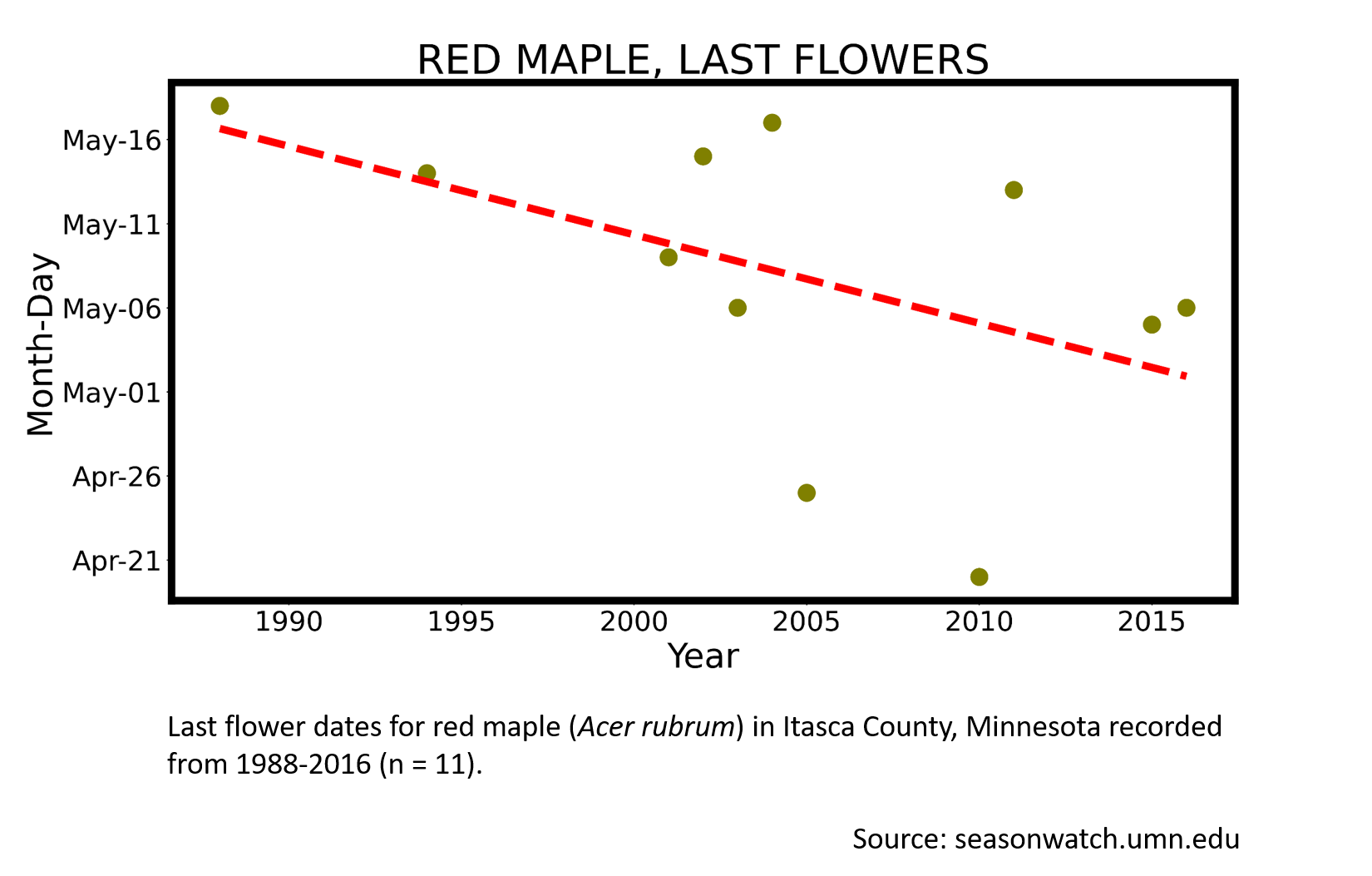
Leaf budbreak
- Earliest: April 21 (occurred in 2005)
- Average: May 7
- Latest: May 21 and 22 (occurred in 2008 and 2013)
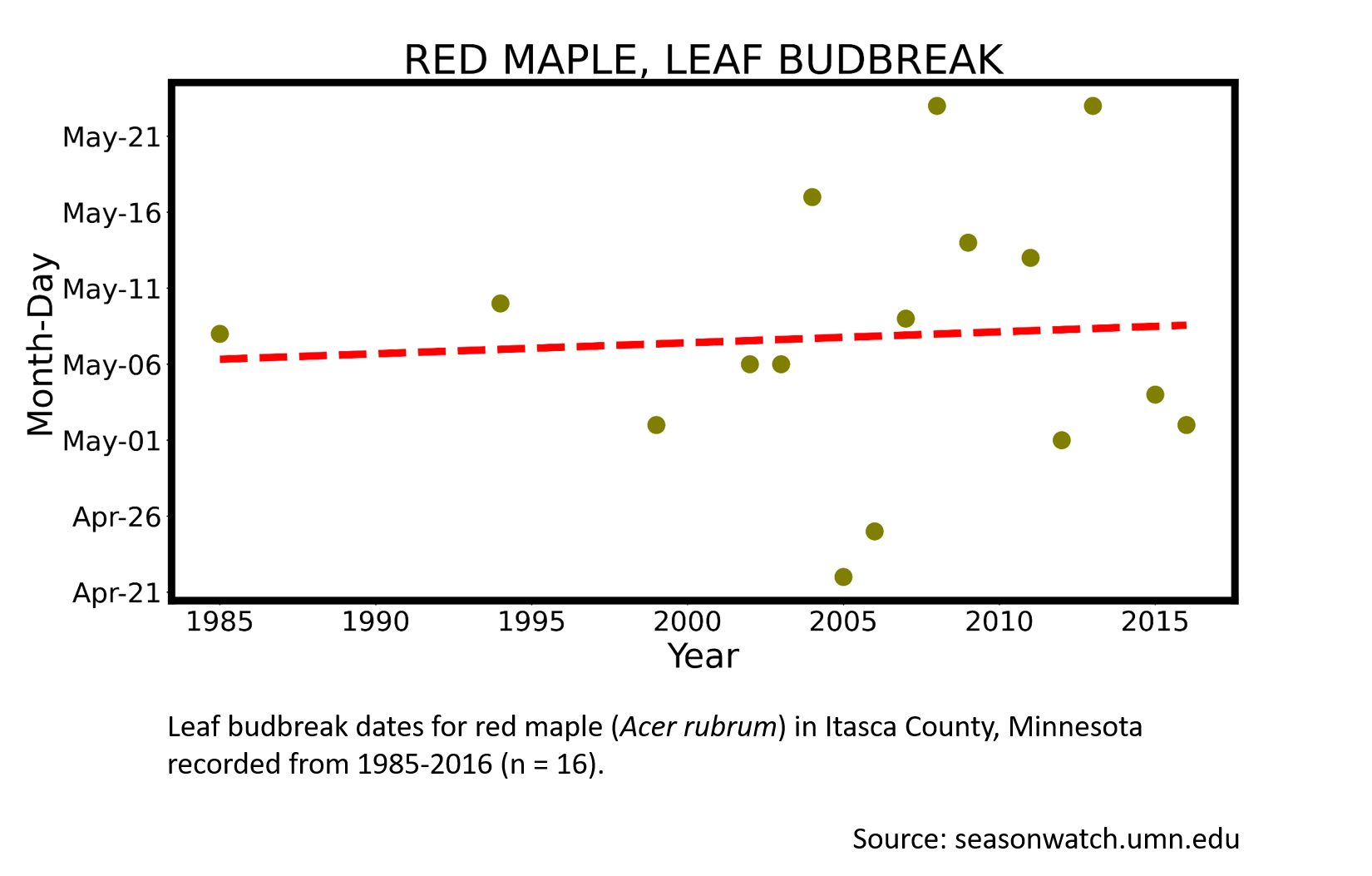
First fall color
- Earliest: July 7 (occurred in 1994)
- Average: August 16
- Latest: September 9 (occurred in 2014)
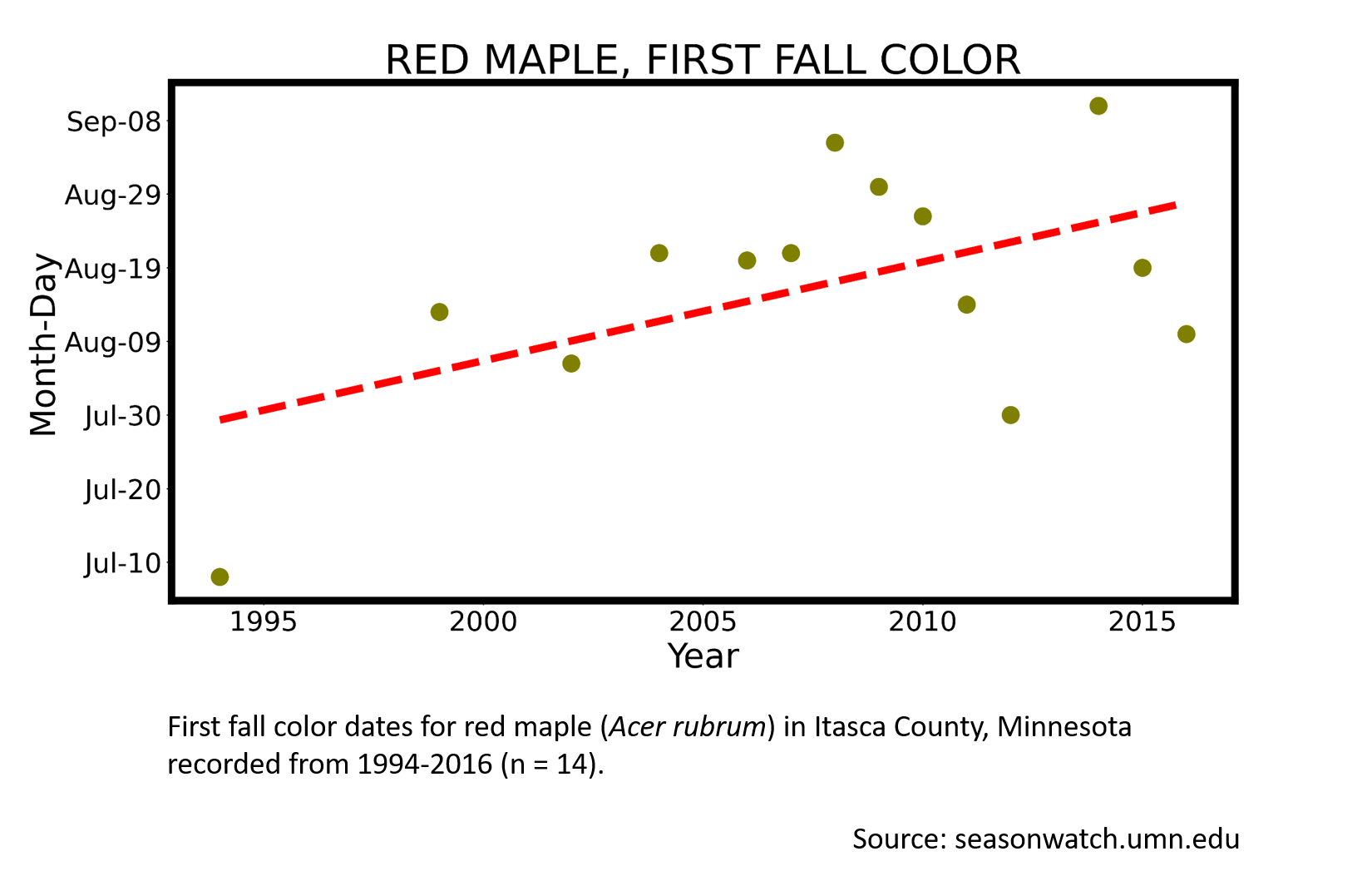
All leaves colored
- Earliest: August 24 (occurred in 2003)
- Average: September 6
- Latest: September 26 (occurred in 2009)
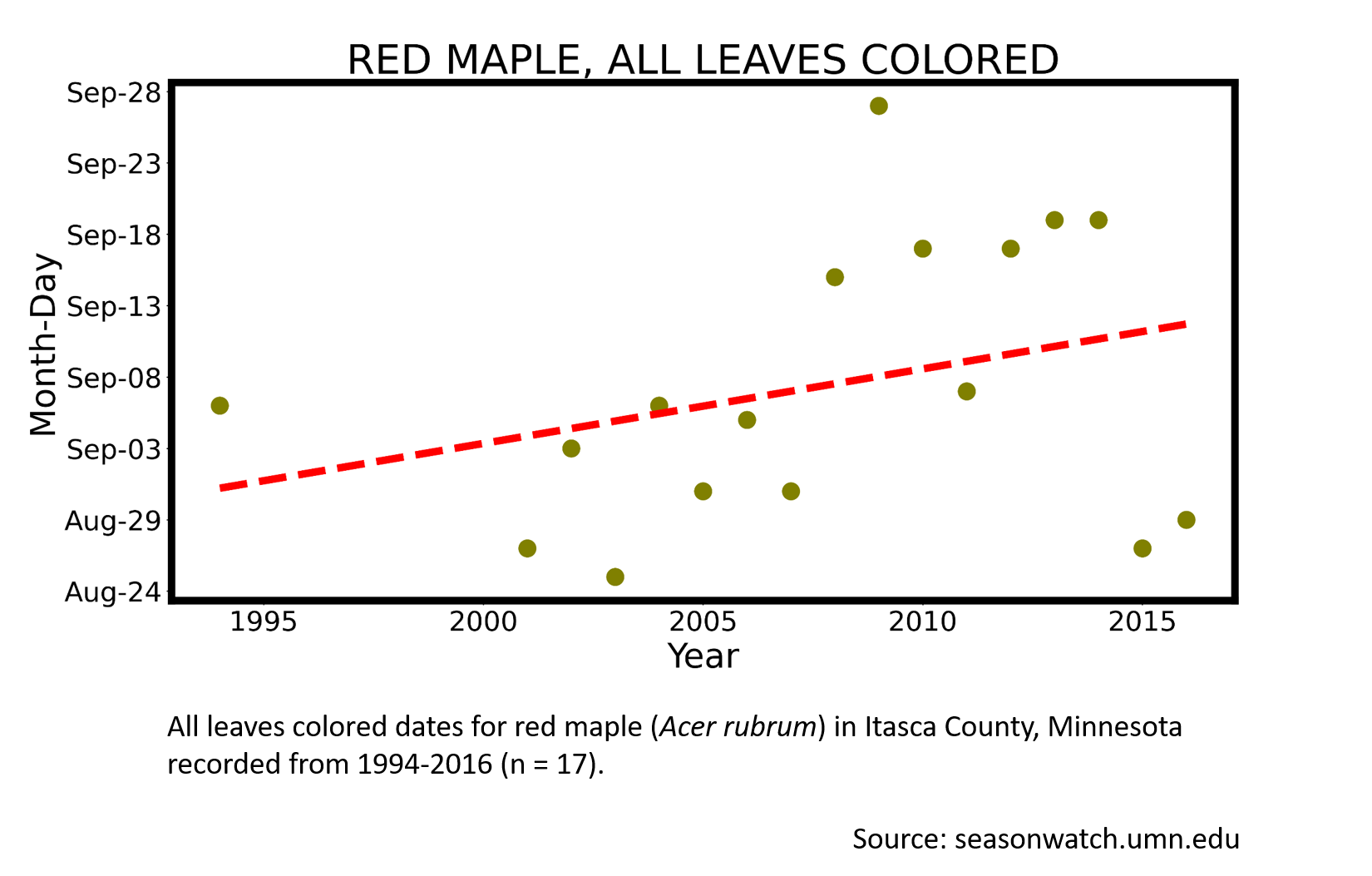
First leaf fall
- Earliest: September 27 (occurred in 2007)
- Average: October 6
- Latest: October 15 (occurred in 1994)
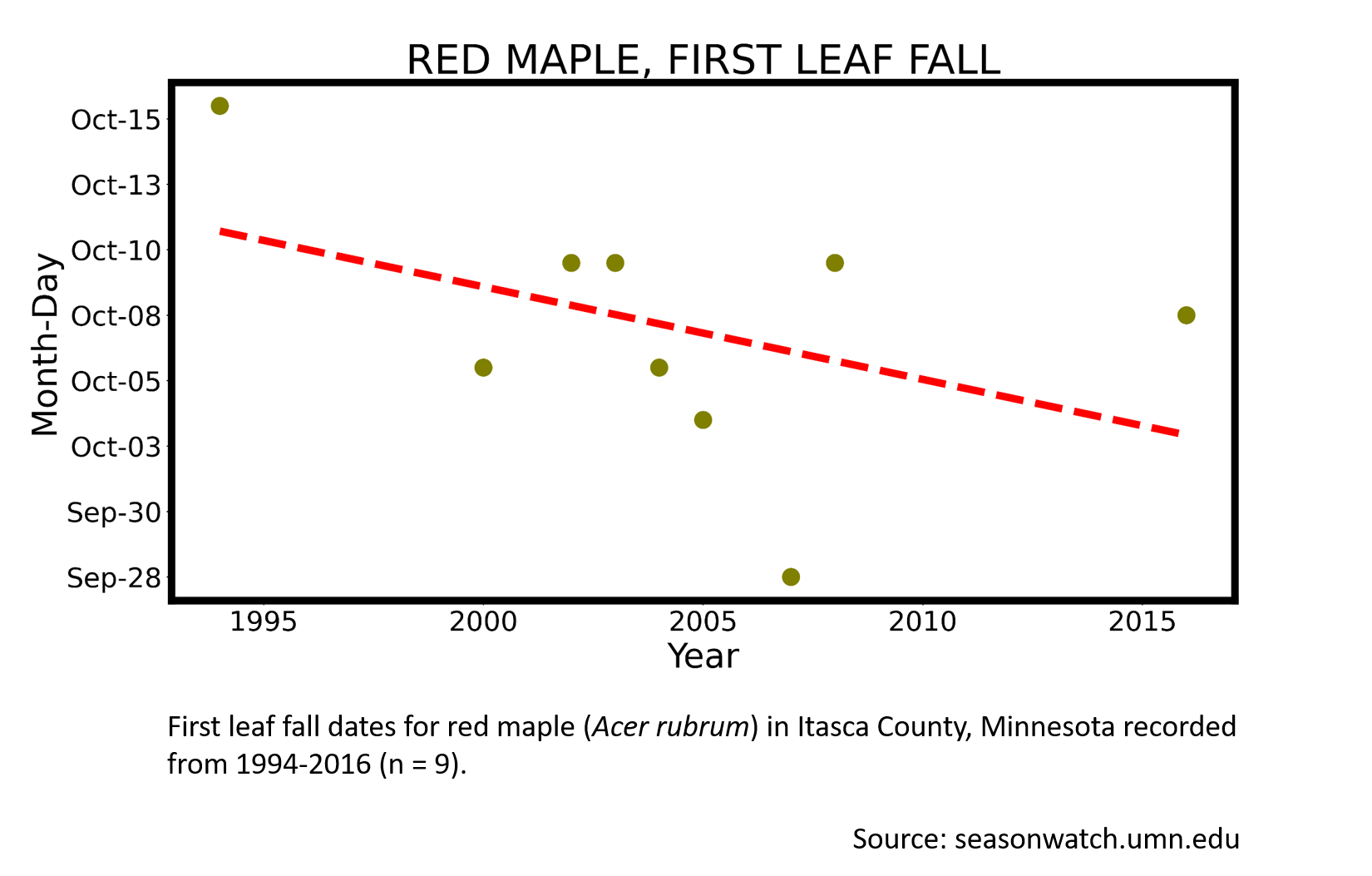
More resources
Twig experiments, a resource by John Latimer and Sarah Mitchell
Red maple (Acer rubrum) in the Minnesota Biodiversity Atlas
Red maple (Acer rubrum) in Nature's Notebook
Cold winter temperature can accelerate the timing of spring budbreak, synopsis of a journal publication by Claudia Nanninga, Chris R Buyarski, Andrew M Pretorius, Rebecca A Montgomery (2017) in Tree Physiology 37: 1727–1738.
Keep exploring Season Watch
Keep exploring Season Watch
Co-author: Jayme Hogan, Minnesota Master Naturalist
